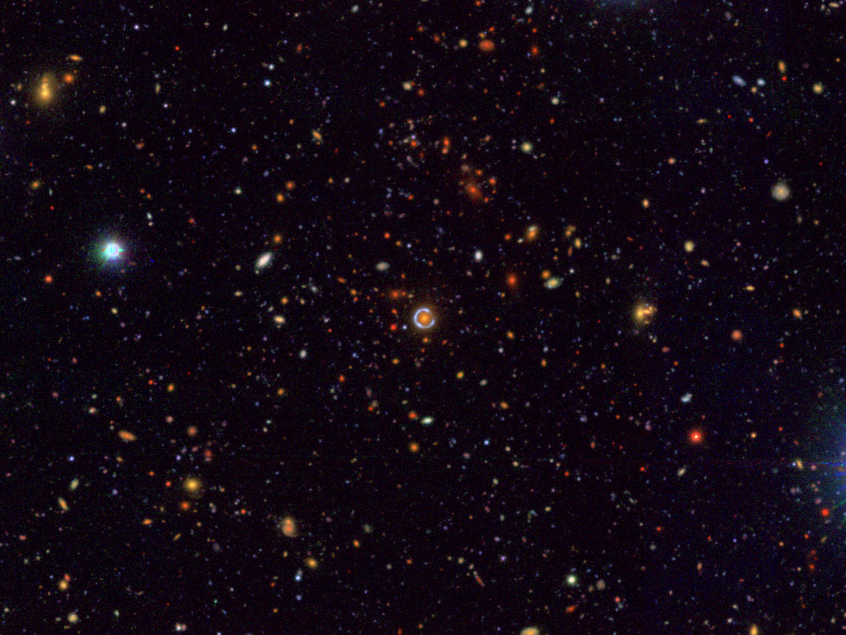Subaru Gallery
Subaru Gallery TOPSDSS J0232.8-0323
February 5, 2025
Last updated: September 30, 2025
Last updated: September 30, 2025

Detail
When a massive object, such as a galaxy or a galaxy cluster (as a "foreground object"), is positioned between a distant galaxy (as a "background object") and Earth, the light emitted from the background object is affected by the gravitational field of the foreground object. This effect is called "strong gravitational lensing" when the gravitational field is strong enough to distort the background object's image clearly.
When a background object is positioned nearly perfectly behind a foreground object, the light from the background object is distorted into a ring shape known as an "Einstein ring." This Einstein ring was discovered by the Sloan Digital Sky Survey (SDSS) observations. The orange foreground object at the center of the ring is located 4.8 billion light-years away from us, while the nearly ring-shaped background object is 11.0 billion light-years away. This kind of gravitational lensing is rare, making it a significant target for research.
(Credit: NAOJ; Image provided by Masayuki Tanaka)
【Distance from Earth】 4.8 billion light-years / 11 billion light-years
【Instrument】Hyper Suprime-Cam (HSC)
When a background object is positioned nearly perfectly behind a foreground object, the light from the background object is distorted into a ring shape known as an "Einstein ring." This Einstein ring was discovered by the Sloan Digital Sky Survey (SDSS) observations. The orange foreground object at the center of the ring is located 4.8 billion light-years away from us, while the nearly ring-shaped background object is 11.0 billion light-years away. This kind of gravitational lensing is rare, making it a significant target for research.
(Credit: NAOJ; Image provided by Masayuki Tanaka)
【Distance from Earth】 4.8 billion light-years / 11 billion light-years
【Instrument】Hyper Suprime-Cam (HSC)
Relevant Tags
Select Category
